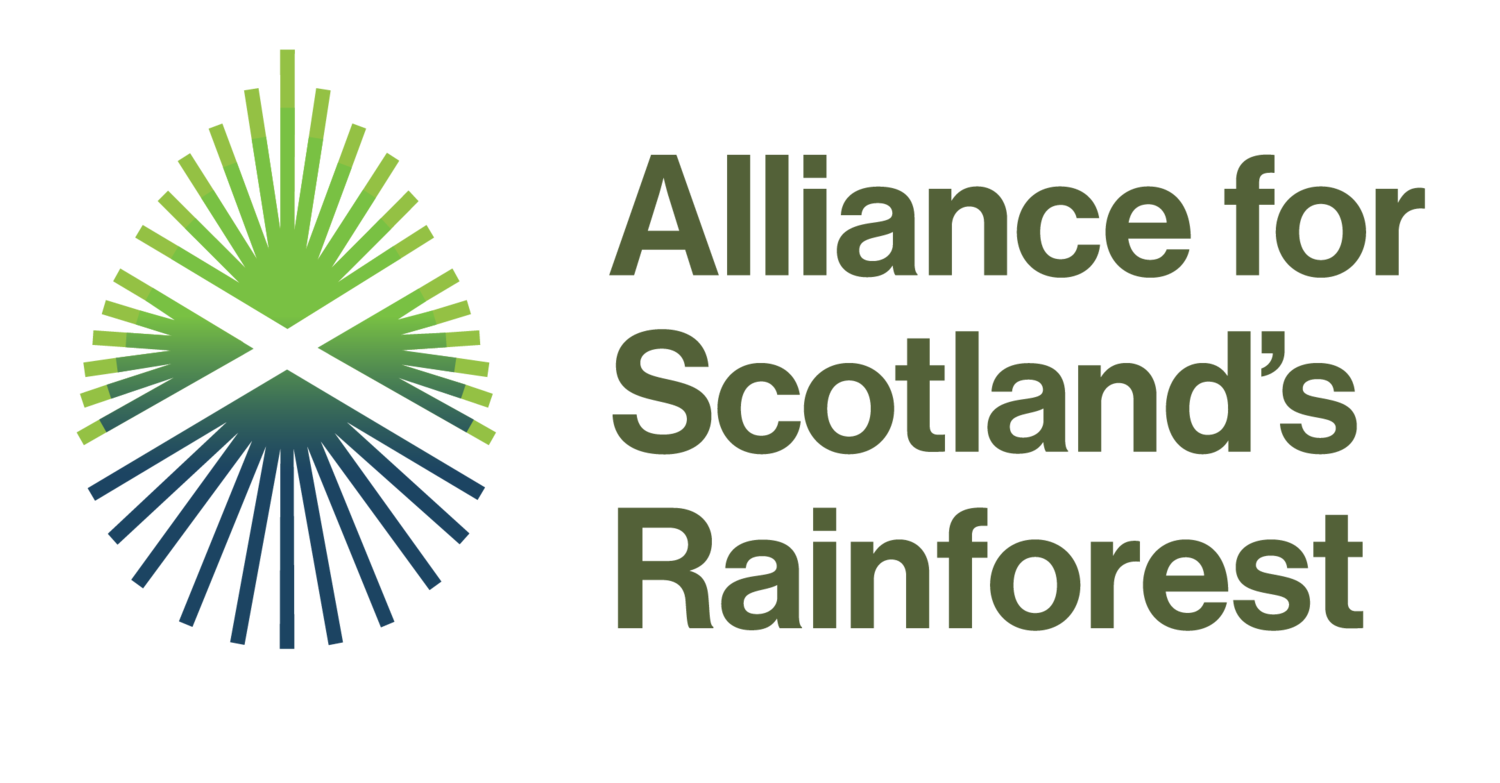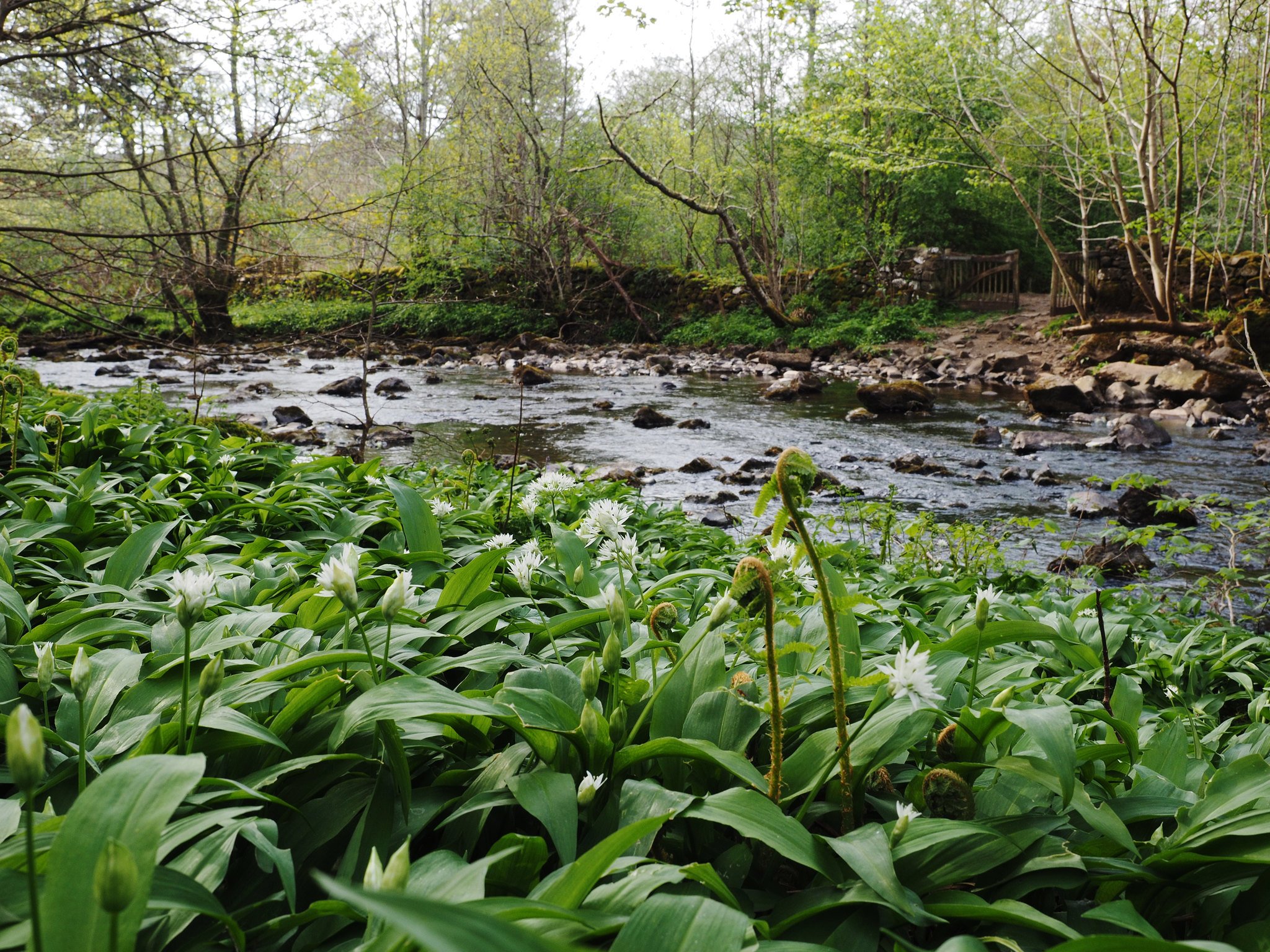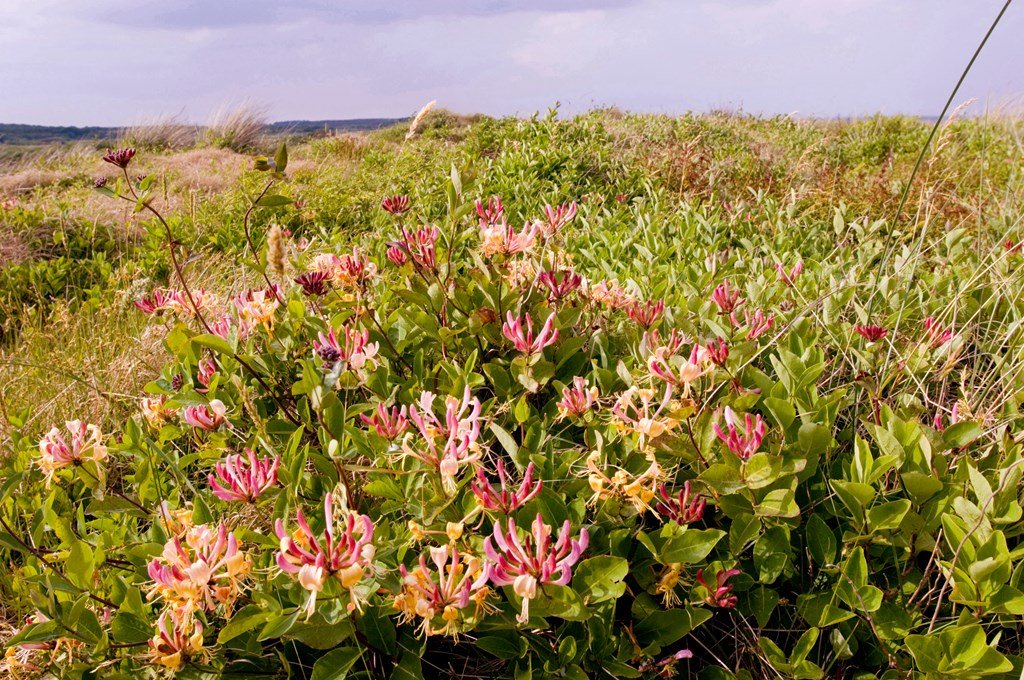Flowers
In spring and summer, the rainforest comes alive with carpets of wild flowers. These are important sources of food for pollinating insects such as butterflies, which often lay their eggs on the flower leaves. In the autumn, the flowers become seeds or berries, providing a second food source for many birds and mammals.
Bluebells
Bluebells are a great indicator species for areas of ancient woodland, even when the trees are no longer there. They’re very slow growing, and don’t like disturbance, particularly trampling by either people or animals. Most of the year they’re invisible underground, but they emerge en masse in April and May depending on the weather and where they’re growing. The UK is very much a stronghold for bluebells, and as they bloom so early in the year, they’re a really important food plant for all sorts of pollinating insects like bees and hoverflies.
Dog violet
There are several species of violet, but the dog violet is the most common and widespread. It can be found in hedgerows and on grassland as well as in woods. It’s easiest to identify from April to June when its pretty, dark purple flowers are in bloom. These grow quite low to the ground, around 15cm tall, and rise up from dark green, heart-shaped leaves.
The dog violet is an important flower for butterflies and is a favourite of both the pearl-bordered and small pearl-bordered fritillaries. The adults feed on the flowers, and also lay their eggs on the leaves.
Another violet to look out for is the marsh violet, which is common in flushed and squelchy open areas within Scotland's rainforest. These violets are also important for butterflies.
Bogbean
The bogbean is an aquatic plant with floating leaves. It looks like it would be more at home in a tropical rather than a temperate rainforest, but it’s a native species and isn’t introduced.
Bogbean flowers start off as pink buds but then open into white blooms in May and June. Unusually, these are fringed with white hairs making them look like they’re full of fluff. They’re very pretty, particularly when you see lots of them in bloom together.
You’ll find bogbean in bogs (unsurprisingly!) and also in shallow pools and around loch edges. It was once quite common in the UK, but has become rarer due to the draining of wetlands.
(Credit Paul Turner)
Devil’s-bit scabious
This curiously named flower is one of the few that you’ll find in bloom late into the season in Scotland’s rainforest. It’s a common plant of wet habitats across the UK, and quite distinctive as it can grow up to 1m tall!
The flowers start to bloom in July, and can still be seen into October, making them an important source of food for bees and other pollinators. The plant itself is also a food source for the caterpillars of a rare butterfly, called the marsh-fritillary butterfly, which in Scotland is restricted to the west coast, particularly Argyll.
Other flowers of the rainforest











